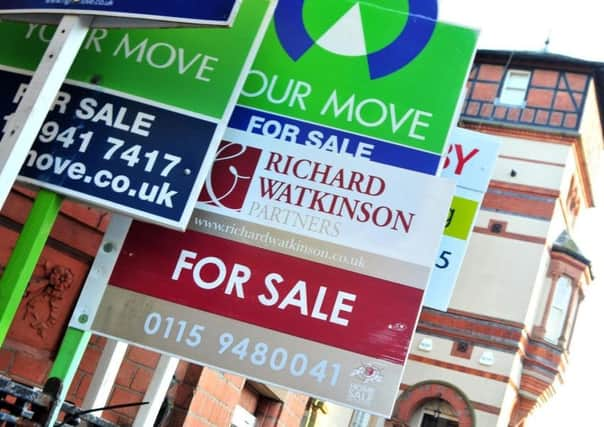Andrew Vine: Our streets are turning grey as young priced out


Where once the streets were full of parents taking young children to school in the mornings, now there are few of them, and most of the people out and about early are the retired heading out to buy their newspaper.
This is Britain’s housing problem in microcosm – younger people priced out of a neighbourhood of modest, once-affordable homes.
Advertisement
Hide AdAdvertisement
Hide AdAnd it’s not healthy for the neighbourhood, or any of us who live here. Communities need new blood and a mix of age groups if they are to thrive.
But if the trend where I live continues, it is going to look very like a purpose-built retirement community in a few years’ time.
The change has happened slowly over the past decade, but it has been inexorable.
Mine is by no means one of the elite residential areas of Yorkshire that attract premium prices. Even so, the cost of buying here has risen beyond the means of many younger people, even if they mortgage themselves to the hilt.
Advertisement
Hide AdAdvertisement
Hide AdThat has changed the area’s character for the worse. These properties were typically the second home that couples bought. Having started with a flat or a small terrace, now they were stepping up to a three or four-bedroom semi with a garden and enough space for a family to grow and play.
New neighbours were usually in their late 20s or early 30s, both working, and often with a child of pre-school age.
Everything points to it being an attractive area for families – in the catchment area of good schools within easy walking distance, close to a park, sports pitches, a swimming pool and a vibrant parade of local shops.
Yet the steady influx of new families has slowed to a trickle. As houses come up for sale, the buyers are tending to be older and more affluent, their children having grown up and left home. And with their arrival, the average age of the neighbourhood creeps steadily upwards.
Advertisement
Hide AdAdvertisement
Hide AdI’m not the only long-time resident to have noticed this. Neighbours have too, like a retired couple a few doors away who, having bought young and brought their own children up here, sold to move closer to them.
They assumed the people coming to view the house would be young couples, but of the half-a-dozen appointments that resulted in offers, only one family fitted that description.
The rest – including the eventual buyers – were on the verge of retirement themselves.
This scenario is bound to be replicated across Yorkshire, and it is one of increasingly ageing neighbourhoods.
Advertisement
Hide AdAdvertisement
Hide AdIt is also a story of a generation of younger people unable to lead complete lives, prevented by rising property prices from putting down roots in a community.
We should be deeply concerned about this, because it isn’t just a matter of personal frustration for people priced out of a decent home.
Families realising their dream of having a home of their own are the glue that helps hold communities together, bringing renewal and fresh life. The friendships forged between children at the local school spread out to their families and build neighbourliness.
The mix of young, middle-aged and elderly works for all three age groups, as they look out for each other, whether it’s an hour’s informal child-care whilst mum and dad are on the way home from work or doing some shopping for older people.
Advertisement
Hide AdAdvertisement
Hide AdThat’s the way that neighbourhoods have worked for generations. It’s what makes them tick.
But we’re in danger of losing that precious mix. Just how hard it is for the young to afford a home of their own was shown last month in a report by The Resolution Foundation think-tank.
It found that in West Yorkshire, home ownership amongst the 25 to 34 age group has fallen by 52 per cent since the mid-1990s. The rest of the county is not far behind, at 43 per cent.
Those are worrying statistics. They tell a story of people stuck on an expensive merry-go-round of renting, or having little choice but to continue living with parents long after they wish to fly the coop.
Advertisement
Hide AdAdvertisement
Hide AdThe problem lies in what to do about it. Building more affordable homes, which has the support of all the major political parties, will help younger people get a foot on the property ladder and eventually move on to somewhere larger.
But that will take years to happen, and in the meantime neighbourhoods like mine grow steadily older and less vigorous.
There are many facets to Britain’s housing problems, and we overlook the potential loss of the vibrant and healthy mix of age groups that holds communities together at our peril.